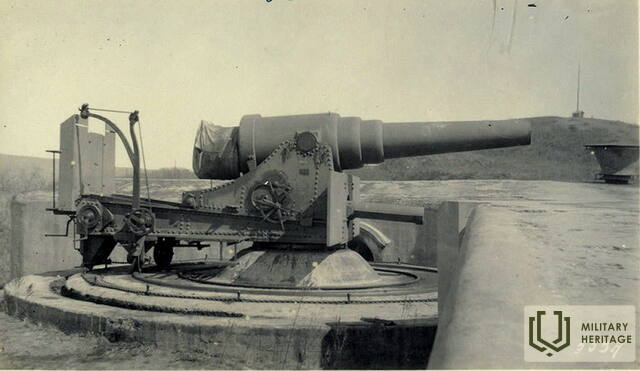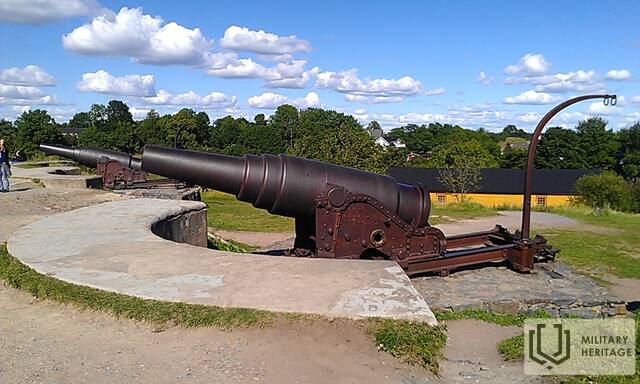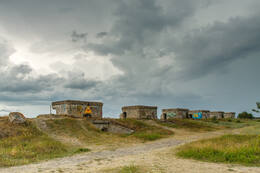About the cannons of the Liepāja Fortress

In the northern part of the fortress was located one of the four coastal defence batteries, Battery No.1, but at the time of the fortress's liquidation its armament was not fully installed.
In the northern part of the fortress was one of the four coastal defense batteries built – Battery No. 1. The battery was planned to house six 6-inch (152 mm) guns of the Canet system of 1892 model, six 11-inch (280 mm) guns of the 1887 model and two 57 mm Nordenfeld anti-aircraft guns. Only the Canet system guns had a sufficiently long firing range to withstand possible fire from the German Navy. Therefore, by the time the fortress was liquidated, the armament had only been partially installed.
Related timeline
Related topics
Related objects
Liepāja Northern Fort and Battery Nr.1 in Karosta
The Northern Forts are the best known and visually most impressive part of the Liepāja Fortress. Built by the Russian tsarist army in the late 19th century, their historical name is Fortress Battery No 1.
In November 1908, less than 10 years after its construction, the Liepāja Fortress ceased to operate, because its construction was acknowledged as a strategic mistake. Some of the cannons were dismantled and taken to the Kaunas Fortress in Lithuania, while others were remelted. Fortification structures were detonated twice in an attempt to destroy the fortifications. Elements surviving to the present day include artillery batteries not fully destroyed in the explosions and underground structures. Just like the Karosta, the Northern Forts were a closed military territory during the Soviet occupation. Visitors to the Northern Forts should be very careful. As in other places on the Latvian coast, the steep shore of the Baltic Sea in the Karosta is dangerous due to potential coastal landslides. Therefore, it is not allowed to walk under the ruins of the forts.
In the northern part of the fortress was located one of the four coastal defence batteries, Battery No.1. The battery was to house six 6-inch (152 mm) guns of the 1892 model of the Canet system, six 11-inch (280 mm) guns of the 1887 model and two 57 mm Nordenfeld anti-ship guns. Only the guns of the Canet system had a long enough firing range to withstand possible shelling by the German Navy. Thus, at the time of the liquidation of the fortress, the armament was only partially installed.
Liepāja Coastal Artillery Battery No. 2
Among the many objects of the Liepāja Naval Museum, the Liepāja Coastal Artillery Battery No. 2 is still the most mysterious place in Liepāja. Battery No. 2 was invariably equipped with ammunition depots for the troops of various existing powers.
Liepāja Fortress Battery No. 2 was built further from the coastline and was protected by a high fortification wall. The battery was armed with 16 11-inch (280 mm) mortars of the 1877 model. After the fortress was dismantled, ammunition depots were set up here. Due to the explosive hazard, the territory was closed to the public for 130 years, a guarded area, but now an exhibition has been set up here about the activities of the 1st Courland Division Headquarters in 1919-1940, as well as photographic evidence of the 1st Liepāja Infantry Regiment, the 2nd Ventspils Infantry Regiment and the Courland Artillery Regiment.









